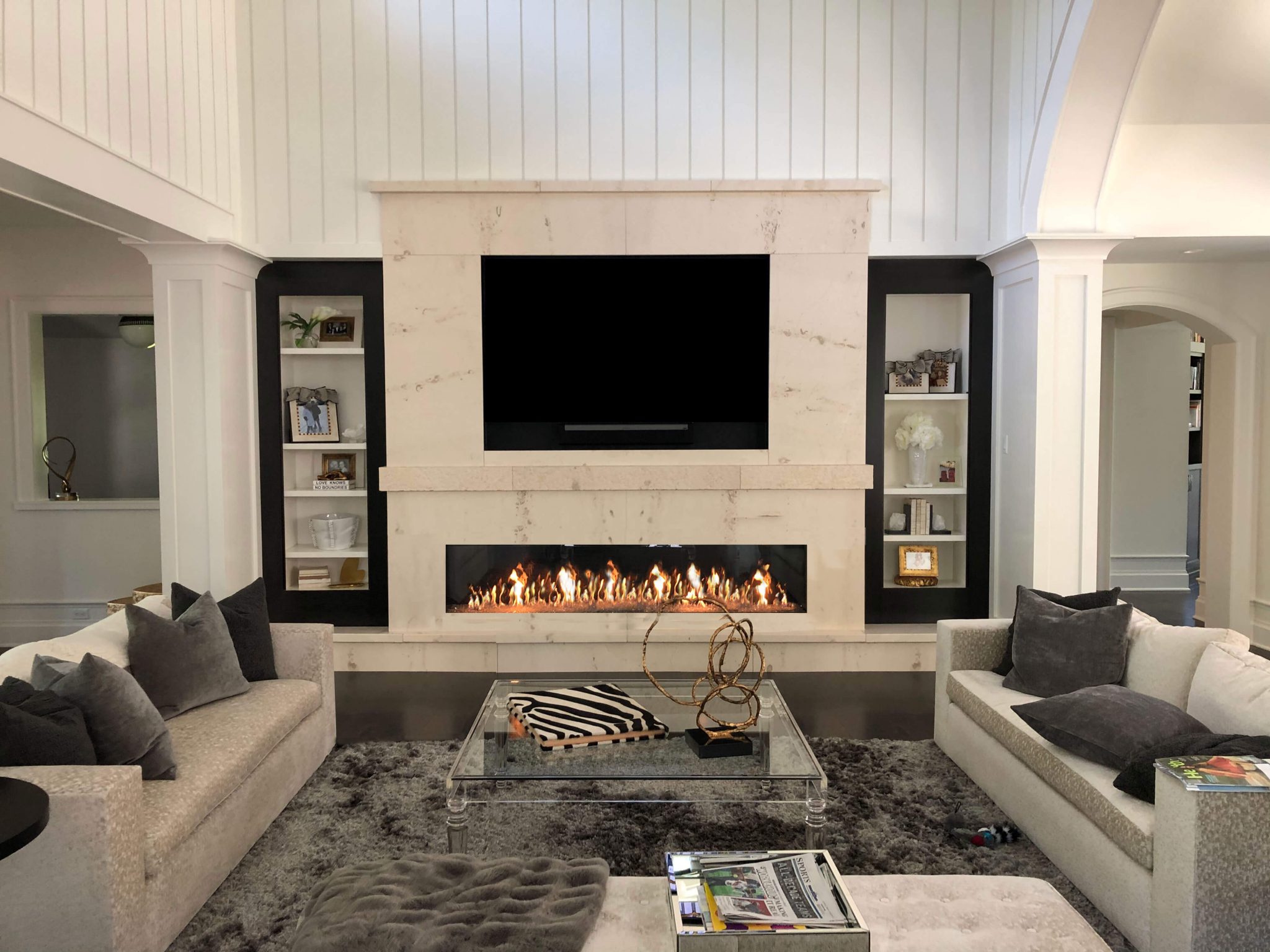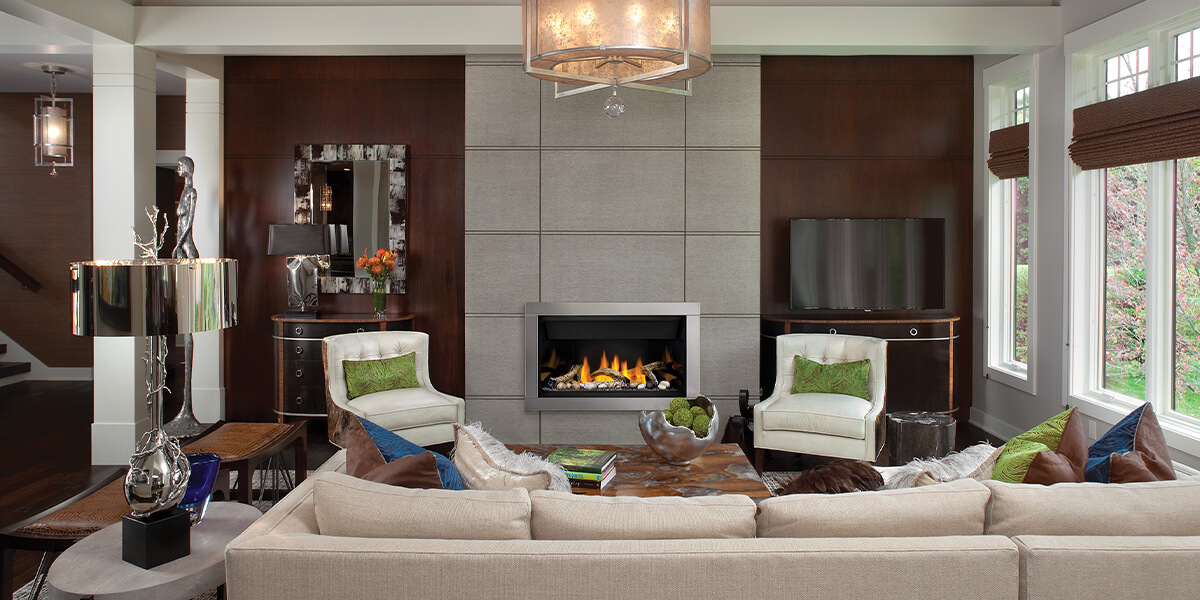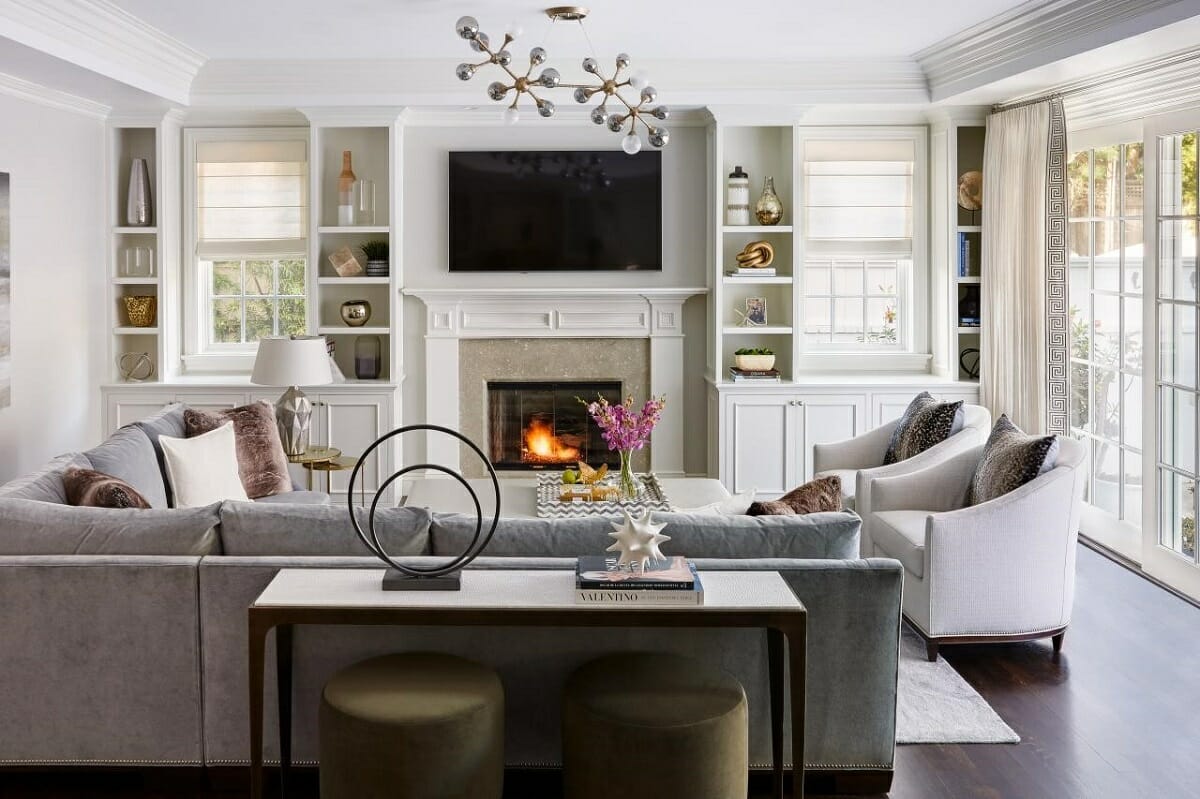Transitional fireplace design emerges as a captivating fusion of traditional and contemporary elements, creating a harmonious ambiance that elevates any living space. With its timeless appeal and versatility, this design approach seamlessly integrates classic details with modern touches, offering a captivating focal point that enhances both form and function.
The essence of transitional fireplace design lies in its ability to bridge the gap between the past and present, offering a timeless aesthetic that complements diverse decor styles. By embracing the balance between traditional elegance and modern simplicity, transitional fireplaces become a captivating centerpiece, adding warmth, character, and sophistication to any room.
Transitional Fireplace Design Characteristics

Transitional fireplace designs seamlessly blend traditional and contemporary elements, creating a harmonious and sophisticated aesthetic. They feature a balanced mix of classic details and modern touches, resulting in a timeless appeal that transcends fleeting trends.
Key characteristics of transitional fireplace designs include:
- Clean Lines and Simple Shapes:Transitional fireplaces often feature clean lines and simple geometric shapes, which lend a modern touch while maintaining a classic elegance.
- Neutral Color Palette:Neutral colors such as white, black, gray, and beige are commonly used in transitional fireplaces, providing a versatile backdrop for both traditional and contemporary furnishings.
- Natural Materials:Natural materials like stone, wood, and metal are often incorporated into transitional fireplaces, adding warmth and texture to the space.
- Combination of Traditional and Modern Elements:Transitional fireplaces typically combine traditional elements, such as ornate moldings or carved details, with modern elements, such as sleek lines or geometric shapes, creating a harmonious blend of styles.
Examples of Transitional Fireplace Designs
Here are a few examples of fireplaces that showcase transitional design principles:
- White Marble Fireplace with Simple Moldings:A white marble fireplace with simple moldings and a clean-lined hearth creates a classic yet modern look.
- Black Granite Fireplace with Geometric Surround:A black granite fireplace with a geometric surround and a floating hearth combines traditional materials with a contemporary design.
- Wood-Burning Fireplace with Metal Accents:A wood-burning fireplace with a metal surround and a reclaimed wood mantel blends rustic and modern elements for a transitional aesthetic.
Materials and Finishes
Transitional fireplace designs embrace a harmonious blend of traditional and modern elements, extending this balance to the materials and finishes employed. Stone, wood, and metal emerge as popular choices, each offering unique advantages and aesthetic appeal.
Stone
- Pros:Stone offers durability, heat resistance, and a timeless elegance. It comes in a range of colors and textures, allowing for customization to suit any interior style.
- Cons:Stone can be heavy and expensive to install, and its cool surface may not provide the same warmth as other materials.
Wood
- Pros:Wood brings warmth and a cozy ambiance to the space. It is versatile, allowing for different finishes, from rustic to sleek and modern.
- Cons:Wood is combustible and requires regular maintenance to prevent damage from heat and moisture.
Metal
- Pros:Metal provides a contemporary touch and can be used to create bold accents. It is durable and easy to clean.
- Cons:Metal can conduct heat, making it important to incorporate safety measures to prevent burns.
Styling Transitional Fireplaces

Accessorizing transitional fireplaces is an excellent way to enhance their aesthetic appeal and create a cohesive look in the surrounding space. By incorporating artwork, mirrors, and decorative objects, you can add personality and style to your fireplace design.
Artwork
Artwork can be a stunning addition to a transitional fireplace. Choose pieces that complement the color scheme and style of the fireplace and the surrounding decor. Paintings, prints, or photographs can add a touch of elegance and sophistication to the space.
Mirrors
Mirrors can be used to create the illusion of space and reflect light, making the room feel larger and brighter. Place a mirror above the fireplace mantel or on an adjacent wall to enhance the fireplace’s focal point.
Decorative Objects
Decorative objects, such as candles, vases, or sculptures, can add a personal touch to your transitional fireplace design. Choose objects that reflect your style and interests, and arrange them on the mantel or hearth to create a visually appealing display.
Design Considerations: Transitional Fireplace Design

Transitional fireplace design requires careful consideration of scale and proportion to ensure a harmonious blend with the surrounding space. Understanding how to integrate fireplaces into different room layouts and selecting the appropriate size and style for specific spaces are essential aspects of achieving a balanced and functional design.
Scale and Proportion
Scale refers to the size of the fireplace relative to the room, while proportion pertains to the relationship between the fireplace’s dimensions. A fireplace that is too large or small for the space can disrupt the overall flow and visual balance of the room.
Proper scale ensures the fireplace becomes a focal point without overpowering the space.
Integrating Fireplaces into Room Layouts
Fireplaces can be incorporated into a variety of room layouts to serve different purposes. In living rooms, they often become the central gathering point, defining the seating arrangement. In bedrooms, fireplaces can create a cozy and intimate atmosphere, enhancing relaxation.
In kitchens, they can add warmth and character while providing a functional cooking element.
Choosing the Right Fireplace Size and Style, Transitional fireplace design
The size of the fireplace should be proportionate to the room’s dimensions and the desired ambiance. A small fireplace in a large room may appear insignificant, while an oversized fireplace in a compact space can overwhelm the surroundings. Additionally, the style of the fireplace should complement the overall design aesthetic of the room, whether it be traditional, contemporary, or a blend of both.
Conclusion

As we conclude our exploration of transitional fireplace design, it becomes evident that this design approach transcends mere aesthetics. It represents a thoughtful fusion of styles, creating a harmonious environment that invites both comfort and contemplation. Whether nestled within a cozy living room or gracing a grand foyer, transitional fireplaces serve as a testament to the enduring power of design, seamlessly blending the charm of the past with the allure of the present.
